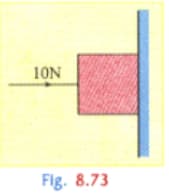An insect crawls up a hemispherical surface very slowly, see Fig. 8.68. The coefficient of friction between the insect and the surface is . If the line joining the centre of the hemispherical surface to the insect makes an angle a with the vertical, the maximum possible value of is given by
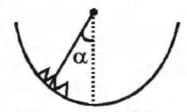


Important Questions on Equilibrium of Concurrent Forces and Friction
Block of mass is placed over the block of mass . The combination is placed over a rough horizontal surface, The coefficients of friction between and the floor is .The coefficient of friction between is A horizontal force of is applied on block B. The force of friction between is:

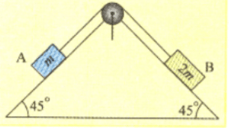
Block of mass and block of mass are placed on a fixed triangular wedge by means of a massless, inextensible string and a frictionless pulley as shown in. The wedge is inclined at to the horizontal on both the sides. The coefficient of friction between the block and the wedge is and that between the block and the wedge is and both the blocks and are released from rest, the acceleration of will be:
Two masses and of and are connected with a string passing over a frictionless pulley fixed at the corner of a table, (as shown in Fig.) The coefficient of friction between the table and block is . The minimum mass of , that may be placed on to prevent it from moving is
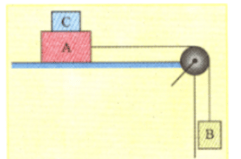
What is the maximum value of the force such that the block shown in the arrangement,does not move?
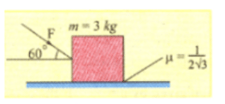
A horizontal force of is necessary to just hold a block stationary against a wall. The coefficient of friction between the block and the wall is . The weight of the block is:
